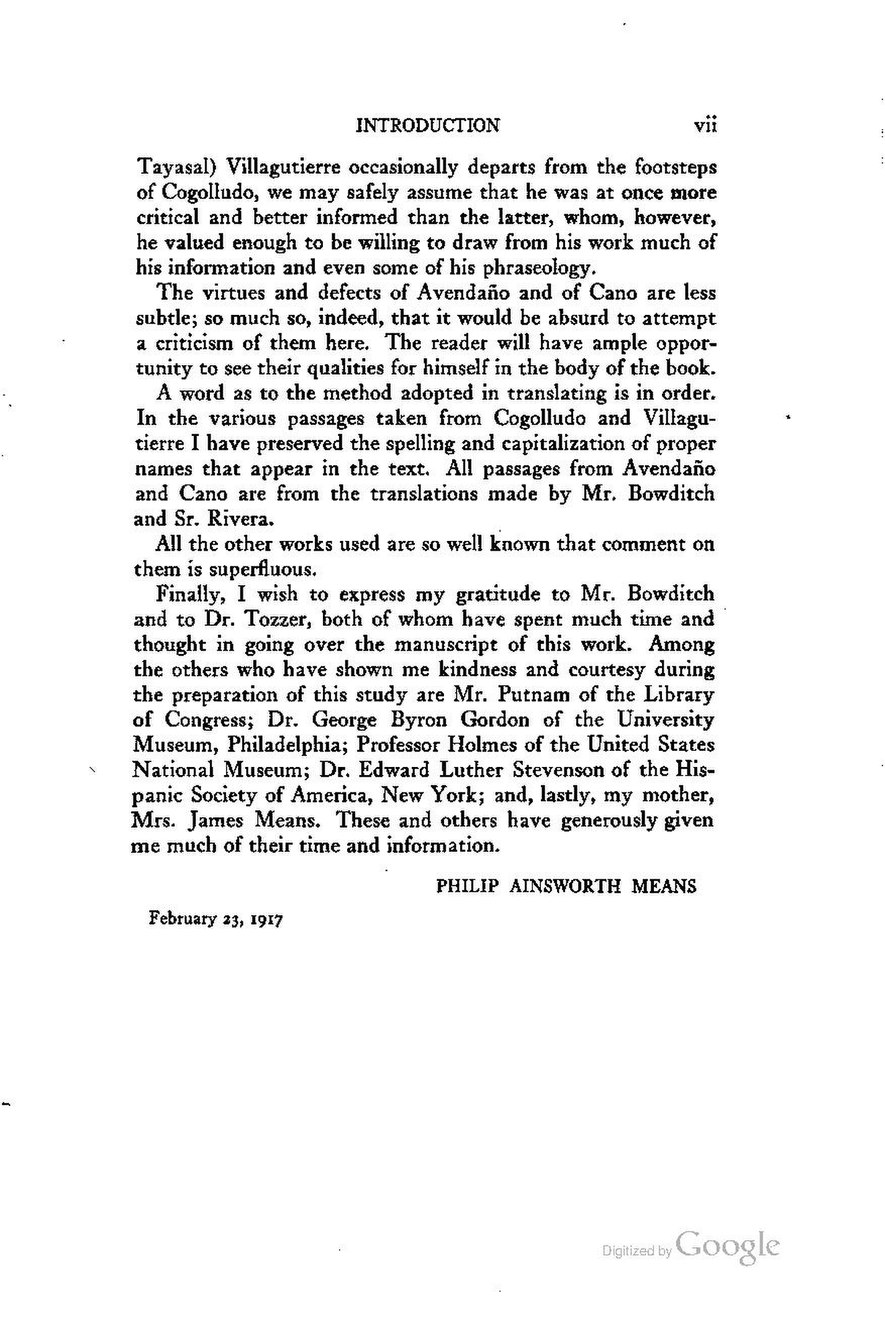Tayasal) Villagutierre occasionally departs from the footsteps of Cogolludo, we may safely assume that he was at once more critical and better informed than the latter, whom, however, he valued enough to be willing to draw from his work much of his information and even some of his phraseology.
The virtues and defects of Avendaño and of Cano are less subtle; so much so, indeed, that it would be absurd to attempt a criticism of them here. The reader will have ample opportunity to see their qualities for himself in the body of the book.
A word as to the method adopted in translating is in order. In the various passages taken from Cogolludo and Villagutierre I have preserved the spelling and capitalization of proper names that appear in the text. All passages from Avendaño and Cano are from the translations made by Mr. Bowditch and Sr. Rivera.
All the other works used are so well known that comment on them is superfluous.
Finally, I wish to express my gratitude to Mr. Bowditch and to Dr. Tozzer, both of whom have spent much time and thought in going over the manuscript of this work. Among the others who have shown me kindness and courtesy during the preparation of this study are Mr. Putnam of the Library of Congress; Dr. George Byron Gordon of the University Museum, Philadelphia; Professor Holmes of the United States National Museum; Dr. Edward Luther Stevenson of the Hispanic Society of America, New York; and, lastly, my mother, Mrs. James Means. These and others have generously given me much of their time and information.
February 23, 1917
